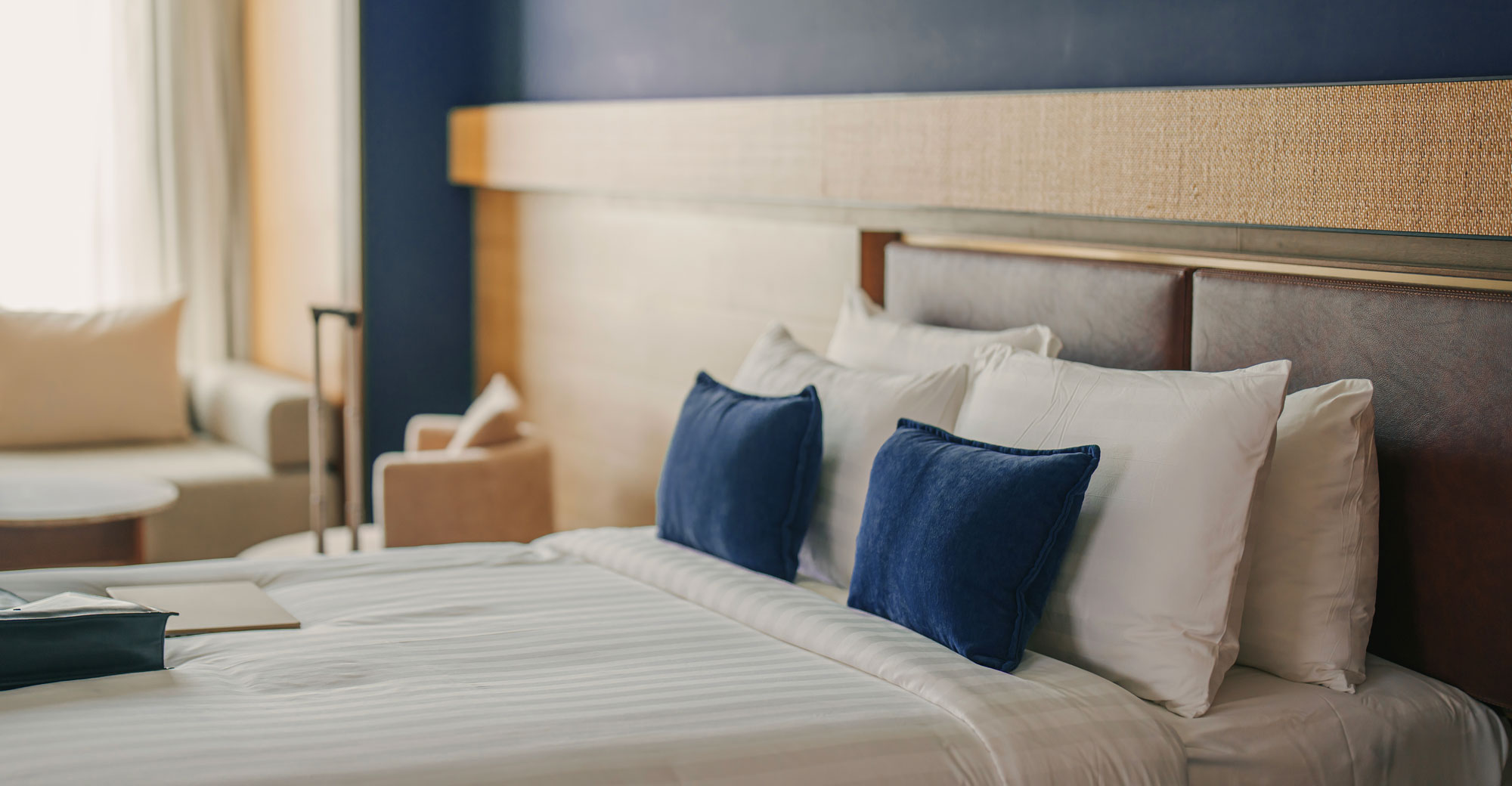Minimizing Risks in Hotels and Casinos
The hotel and casino industry continues to see economic movement in jobs, revenue growth, and domestic travel. According to ADPs National Employment Report, hospitality private employers added 201,000 of 324,000 total jobs in July1 and 30,000 of 177,000 in August.2 In addition, the American Hotel & Lodging Association (AHLA) indicates staffing levels are still a quarter of a million below 2019, one of the major concerns in the industry currently.3
Over the next five years to 2028, the number of domestic trips by U.S. residents is anticipated to rise at an annualized rate of 1.6%, owed especially to strong growth towards the early portion of the five-year outlook period. Moving past 2024, growth is expected to be driven by increased consumer spending, enabling the population to pursue leisure activities, including travel.4
Two business and operational risks owners and managers can address to help preserve profitability, reduce business disruption, and promote employee and guest safety are:
- Dry pipe sprinkler system failure
- Incidents of harassment and violence by guests directed at employees
Dry Pipe Sprinkler System Failure
Colder climates have a significant impact on pipes in the fire protection systems space. Pipes in traditional wet sprinkler systems contain pressurized water that is immediately discharged at force from the sprinkler when sensors detect a fire. In cold weather, these pipes can freeze, causing pipe and water damage.
Alternatively, hotel and casino structures found in colder climates with frame construction tend to utilize a dry sprinkler system in unheated attic spaces. These systems contain compressed air in the pipes that is released opening the pipe valve, allowing water to flow to the pipes, and out the sprinkler heads. When water is not flowing, air or nitrogen pressurize the pipes in these systems and the water is held back by a dry pipe valve located in a climatecontrolled area of the structure.
One well-known downside of these systems is that condensation and/or small amounts of water left over from testing can settle in the pipes over time in low spots. This liquid can freeze and compromise the pipe, causing the pressurization to drop and activating the system, soaking the attic and the floors below.
The National Fire Protection Association (NFPA) maintains a code of best practice for the design, installation and maintenance of dry sprinkler systems, which are more complex than wet systems. NFPA lays out a detailed description and timetable for inspection, testing and maintenance by qualified professionals.
What You Can Do Now
Property managers and maintenance teams should be a part of this process, with frequent visual inspections of the dry pipes in key areas:
- See if any areas are sagging and identify condensation on the outside of the pipe that could indicate moisture is collecting inside.
- Monitor temperatures and install low-temperature alarms in the area housing the dry pipe valve to ensure it remains heated to at least 40° F.
- Maintenance teams should also train managers and key personnel on how to shut off the main valves leading to the fire suppression system so they can take that step once they’ve been assured by authorities that there’s no fire.
Incidents of Harassment and Violence by Guests Directed at Employees
Assault, harassment, and other violent or unwanted acts directed at hospitality staff is all too common and increasing in hotel and casino settings. These establishments are typically understaffed, which means there are fewer employees to monitor the safety of workers. According to an AFL-CIO report study, 58% of hotel employees and 77% of casino employees surveyed in Chicago reported an incident of workplace sexual harassment by a guest.5
Housekeeping staff, maintenance workers, and other “lone workers” are the most vulnerable as they do their jobs far away from highertraffic areas. Hotels with restaurant servers and bartenders within the establishment are also vulnerable to harassment from guests and patrons.6 All employees are at higher risk in these areas of the property.
When hotel and casino owners don’t provide adequate protection for their employees or respond immediately to their concerns about guest or patron behavior, they put themselves at risk of liability suits and related actions. This can also lead to a breach in trust of their employees and prospective employees at a time when maintaining adequate staffing levels is one of a hospitality manager’s most immediate concerns.
Housekeeping staff, maintenance workers, and other “lone workers” are the most vulnerable as they do their jobs far away from higher-traffic areas.
The AHLA has outlined an employee safety program for hotel owners that combines policies, training, and technology. One major element of their 5-Star Promise is providing employees location-based safety devices, or panic buttons, so they can summon immediate assistance from a manager, security guard or other staff person when they’re confronted by an abusive, harassing, or violent guest or patron.7 In fact, hotels in some states and local jurisdictions are required to provide these systems for their lone worker employees.
Best Practices to Protect Employees From Harassment and Violence by Guests Include:
- Investing and establishing a well-defined human resource procedure for dealing with harassment.
- Training all full-time, part-time, and seasonal employees to know the procedures for recognizing and reporting harassment.
- Empowering managers and supervisors to treat claims and incidents properly through documentation and investigation that comply with state and federal law.
- Establishing and enforcing protocols for frequent check-ins by lone workers.
- Implementing panic buttons or similar location-based safety devices for staff spread out across the hotel and casino spaces.
Tim
Smith
Executive Vice President, National Hospitality Practice Director
Contributors
Tim Smith
SVP, National Hospitality Practice
Angela Thompson
Sr. Marketing Specialist, Market Intelligence & Insights
Brian Leugs
Writer
